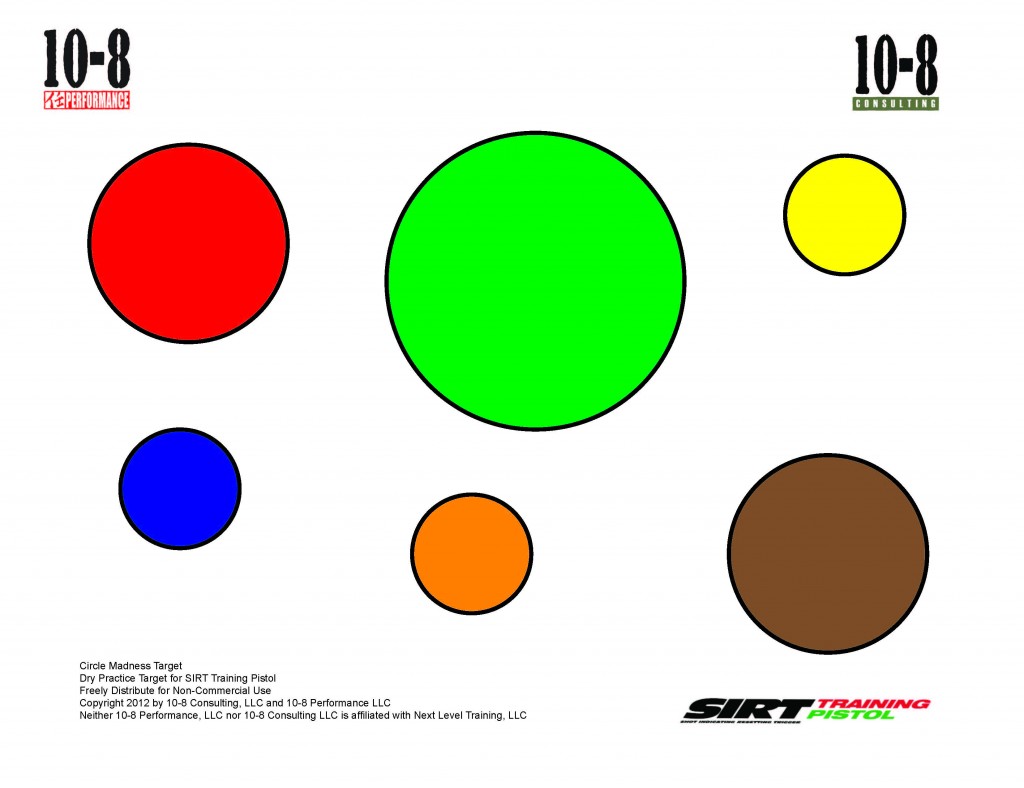One of the lessons Hilton and I learned this year after the Pro Am match was the importance of practicing target to target transitions. This year’s match had quite a few stages in which shooters were forced to transition between targets of varying difficulty. The tendency is to engage a target too fast after engaging an easy (large or close range) target, or take too much time on a close range target after making a more technical shot.
In the past I have gotten wrapped around the axle about first round hits or speed reload times, but in a match like the Pro Am, the speed in which one can engage one target after the next separates the men from the boys. Mathematically this makes sense and the drawstroke time is a small percentage of the entire run time, and most reloads are gamed out to be done on the move.
After isolating this training need, Hilton and I decided we wanted a dry practice target that forced us to use our eyes to pick up the next target and practice engaging targets of varying difficulty. The above target was what we came up with. Print several of these out and place them on the wall in front of you. Randomly call out several colors and engage the color in order but with only one shot on each piece of paper. This will make sense once you have the sheets laid out in front of you. The variations are endless and you can have a training partner mess with you as well. For even more fun, place the sheets in random orientations.
Shooting is about seeing, and this drill will get your eyes tracking from your sights to your target and back onto your sights.
The idea behind this drill is to train your eye to pick up the next target and practice seeing only what you need to see in order to make the shot in the least amount of time. Our friend Mike Hughes aptly named this target “Circle Madness”.
You can use this target with either an unloaded pistol against a safe backdrop for dry practice, or better yet, with a SIRT pistol from Next Level Training.
Download the Circle Madness Target here.




Out of curiosity why not add geometric shapes like a triangle, square, etc.
That can be done, but the idea behind this was to simulate transitioning between similar shaped targets but at differing ranges. We could also intersperse other shapes and sizes. The options are endless, but we were trying to narrow down a specific skillset in the simplest manner possible.